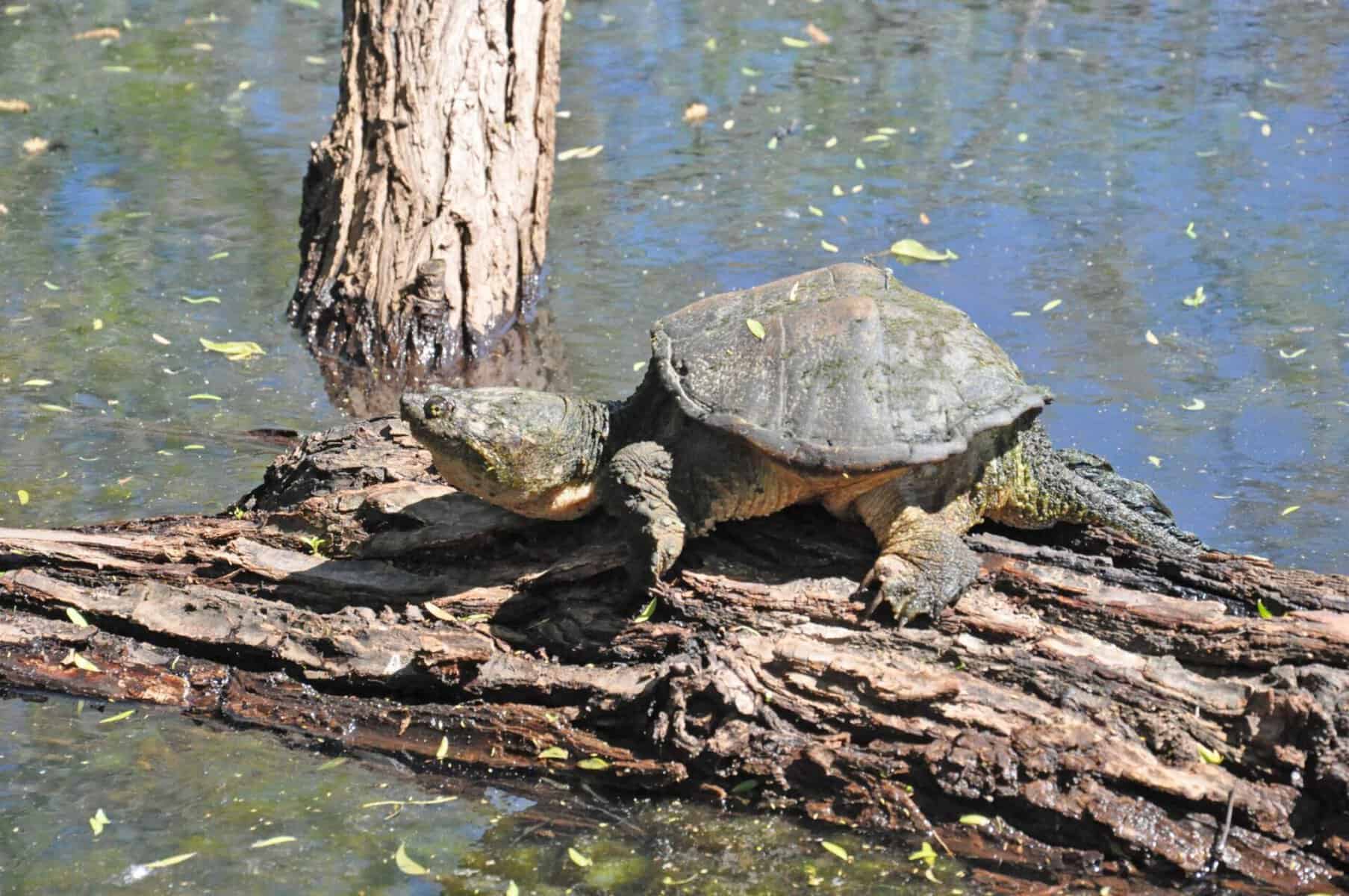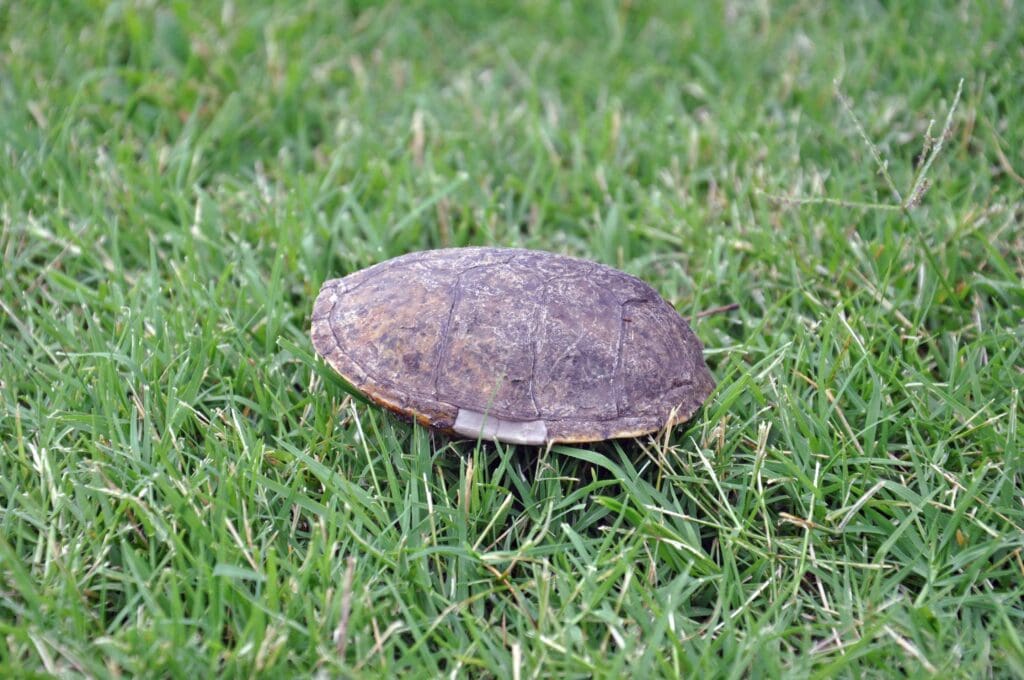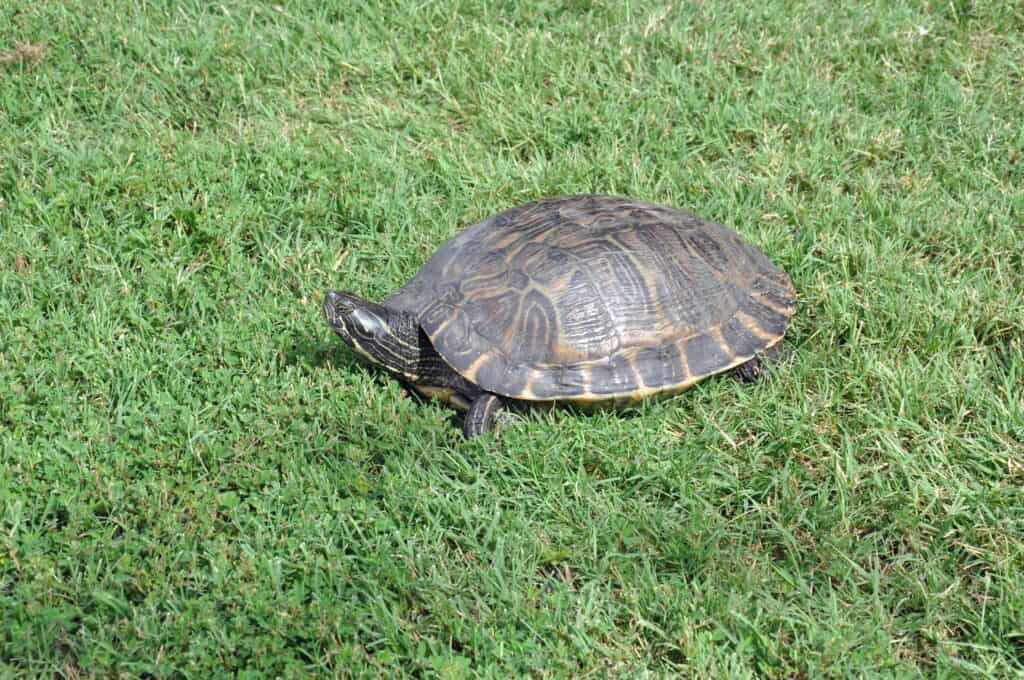We have seen 5 kinds of pond turtles – snapping turtle, Mississippi mud turtle, Eastern musk turtle, Eastern river cooter and red-eared slider.
Pond Turtles Found in Oklahoma
Snapping Turtles
Snapping turtles are the largest freshwater pond turtles. They have large heads and powerful hooked jaws, a long tail and sharp claws. The shell is often covered with algae. Food consists of carrion, plant material and anything that can be caught. The pond turtles may be found away from water as they travel from one pond to another.

Mississippi Mud Turtle
The Mississippi mud turtle is a small pond turtle, less than 5 inches long. The shell ranges in color from olive to brown. It is mainly aquatic and nocturnal but may be seen on land, especially in the morning or evening. The turtle is found in swamps and ponds with muddy bottoms and abundant aquatic plants. Its food includes aquatic plants, carrion, crustaceans, mollusks and amphibians.
Eastern Musk Turtle
The Eastern Musk pond turtle is also small, less than 5 inches overall. Because of the strong musk it produces, it is also called a stinkpot turtle. It has a low-rounded shell like the mud turtle. What really distinguishes it are two light-colored lines that run from the nose on each side of the head. The turtle rarely leaves the water and is seldom seen. It’s not a strong swimmer and normally walks on the bottom underwater. It is nocturnal and doesn’t bask. The turtle’s food is a wide variety of plants and animals.

Eastern River Cooter Turtle
The Eastern river cooter is a larger pond turtle, growing to a foot in length. It is found in rivers, lakes and ponds. It’s a diurnal turtle and can be seen basking on logs or other structures at the pond’s edge. The shell is a dull brown with lighter brown markings. The skin is dark with yellow stripes. It’s an herbivore and feeds on various plants. The turtle often roams away from water looking for nest sites or traveling between ponds.

Red-Eared Slider Turtle
The red-eared slider is our common pond turtle and the most abundant turtle in Oklahoma. It is also the aquatic turtle sold in the pet trade. Baby turtles sell for about $30. They will live for 50 years. The shell is greenish brown with lighter markings.
Old turtles are brown. The head and legs are green with yellow stripes. There is a red stripe on the side of the head behind the ear, hence the name. They are basking turtles, and several may be seen on a log at the water’s edge. Juveniles are carnivores, and adults are omnivores and eat mainly plant material.
Turtles will usually urinate while laying eggs. They do this for several reasons. It makes the soil softer for digging, it’s a general camouflage, the smell repels predators, and after the soil dries and hardens, it will be more difficult to dig up the eggs.
Check out this guide on how to identify pond turtles and read more Nature Notes!